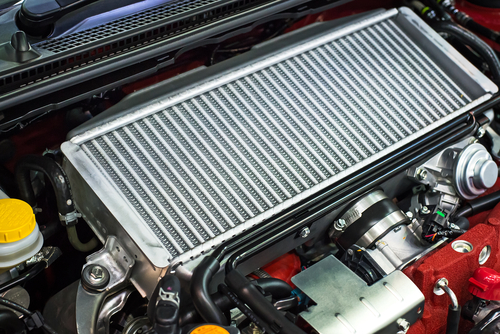Car radiator coolant is also known as anti-freeze and this is designed to stop the car from overheating. This will need changing and flushing according to your manufactures instructions. But what are the signs that your car radiator coolant needs changing?
What are the signs that your car radiator coolant needs changing?
There are a number of signs to look out for in relation to your car radiator coolant needing to be changed or flushed. These signs include:
- A hotter engine- You may notice that your vehicles engine is much hotter than usual and this is usually an indication that the cooling system is not working as effectively as it should be. As a result, new coolant and a radiator flush should be a top priority.
- The coolant light is on- One of the most obvious signs that your radiator needs flushing and the coolant to be changed is the low coolant light on the dashboard being illuminated. When this lights up, it’s important that you check your coolant levels as soon as possible to reduce any potential damage.
- A sweet smell from the engine- A coolant leak can cause a sweet smell that may come from the engine or from the vents, with the sweet smell being caused by the coolant burning. If you notice this, its important to tackle the issue as soon as possible.
- Your heater isn’t working- If your car radiator simply isn’t heating your vehicle and the car isn’t getting warmer, this is not only inconvenient but it also indicated that your coolant needs changing.
What are the problems associated with unflushed coolant?
Changing your car radiator coolant is not as easy as simply adding some coolant to what is already there. Instead, the existing coolant will need to be drained and flushed. Failing to follow this step can result in a number of problems and issues, including:
- Creating scale on the engine- while coolant is designed to prevent engine corrosion, over time coolant, especially old coolant left in the system, can begin to corrode the engine. This is because the cooling products have a high water content, and this will damage the engines metal over time.
- Damage to the thermostat- an important part of any vehicle, the thermostat helps to control the temperature of the vehicle and the flow of coolant. If old coolant is left, small pieces of metal in this can become stuck in the thermostat valve and cause this to remain open or closed. This can result in damage to your cooling system and engine.
- Old coolant can form clogs- old coolant can combine with dirt and cause build ups and clogs within your radiator, causing your vehicles engine to overheat, and the heater to blow cold air.
- Old coolant can cause leaks- old coolant can become contaminated with small pieces of metal from the engine over time and this can then cause damage to specific vehicle parts, like gasket seals and hoses, causing leaks and further damage that can be costly to repair.
For more information or for professional car radiator or auto air conditioning repair, get in touch with the team today, here at MRS Heat Transfer.

